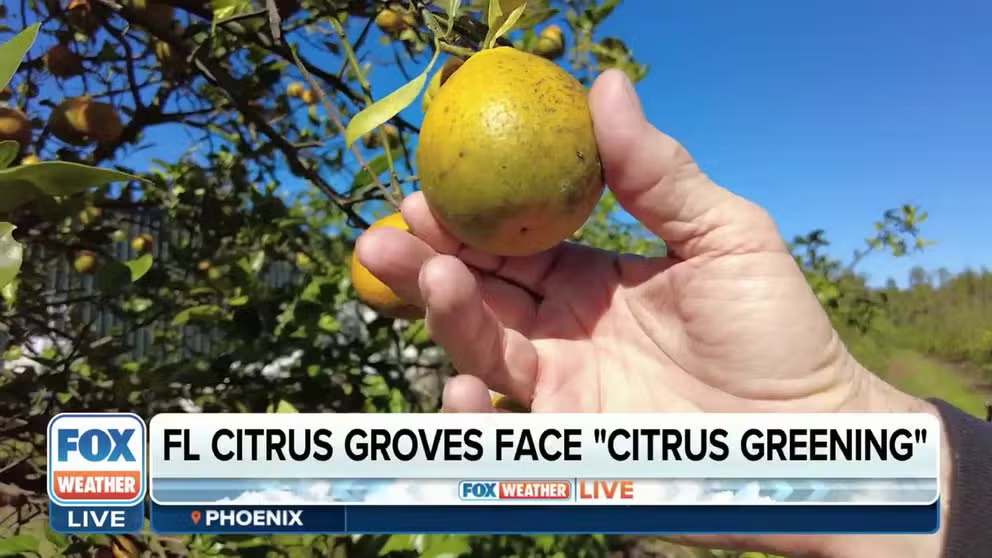Less juice to squeeze: Extreme weather, diseases impacting orange harvests
The reduction in Florida production has been blamed on citrus greening and weather disasters. Both Hurricane Irma in 2017 and Hurricane Ian in 2022 caused a large amount of crop damage.
Weather takes a toll on Florida oranges
FOX Weather's Brandy Campbell takes us to an orange grove in Naples, Florida to find out how the trees are coming back from Hurricane Ian. The current crop faces several other weather challenges too.
A combination of diseases and weather extremes continue to impact orange growers in the western hemisphere, leading to prices spiking over 30% from just a year ago.
Florida and Brazil, the two largest growers of the fruit for juicing, are experiencing production values at multi-decade lows.
"There are three main factors driving the soaring price of orange juice, and it's drought, disease and demand," Ted Jenkin, oXYGen Financial CEO and co-founder, told FOX Business.
The U.S. Department of Agriculture estimates that 70 percent of oranges produced in Brazil are used for juicing, but the crop is on track to produce levels not seen since the 1980s.
NATIONAL PICKLE SHORTAGE TIED TO EXTREME WEATHER IN MEXICO
"Overall, the projected volume represents a significant drop of 24.36% as compared to the previous crop that totaled 307.22 million boxes, a value close to the average for the last decade. Consequently, there is no substantial difference when comparing the current crop with the average volume harvested in the last 10 years," Fundecitrus, an institution founded and maintained by citrus growers in Brazil, stated during a recent update.
According to the group, an increased intensity of citrus greening, as well as high temperatures and a water shortage during the crucial flowering period, are the main causes of a significant drop in production.
Similar problems exist in the Sunshine State, where harvests recently dropped to pre-World War II levels.
According to the USDA, the state’s orange production peaked in 1998 at 240 million boxes but saw a significant decline after the historic 2004 hurricane season.
A report from the University of Florida’s Economic Impact Analysis Program estimated agricultural losses from 2022’s Hurricane Ian at around $1 billion on top of previous disasters.
There is also no known cure for citrus greening, meaning that a tree with the disease will deteriorate until it dies.
FLORIDA SUFFERS $1 BILLION HIT TO AGRICULTURE INDUSTRY FROM HURRICANE IAN
Despite the interferences, the USDA anticipates production will increase from historically low values.
While initial estimates were calling for a 19% increase this year over the 2022-23 cycle, production values have come in lower, which could equate to only a 13% increase.
The combined squeeze from both production regions has caused prices to skyrocket to their highest levels ever, according to data from the U.S. Bureau of Labor Statistics.
A 12-ounce can of frozen orange juice concentrate was reported to be $4.28, an increase of nearly 50% from levels seen during 2020.
Prices for oranges are also hovering near record territory of $3.69 per pound, which is more than $2.50 higher than levels in 2020.
Neither data from Brazil nor the USDA show when the citrus crisis could end, meaning that exacerbated prices and production shortfalls could persist for a while.
Typical orange harvesting season begins as early as the fall and lasts through the spring but is dependent on weather conditions year-round.
